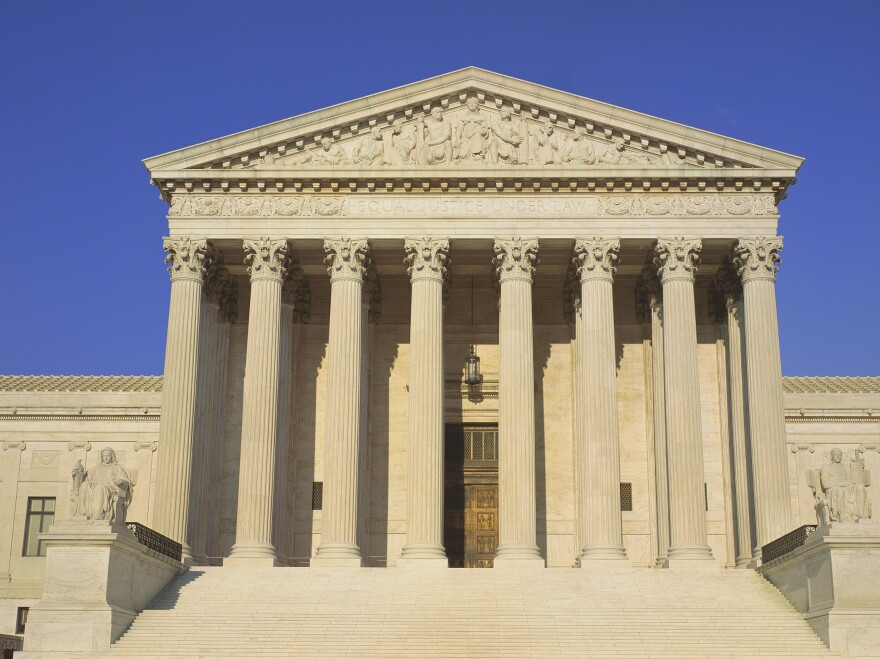If the ruling goes the way the Dunleavy administration would like, the Environmental Protection Agency will no longer have oversight over pollution and contaminants in Alaska’s isolated wetlands. The State of Alaska will.
Isolated wetlands are wetlands that are not right next to large bodies of water. They cover much of the Yukon- Kuskokwim Delta and other parts of Alaska
If you look at the tundra habitat all along the coast and the marshes, there are 1000s and 1000s and 1000s of little isolated wetlands.
Boyd Blihovde is the refuge manager for the Yukon Delta National Wildlife Refuge. Which encompasses most of the Y-K region. Blihovde says at least 20% of the refuge is isolated wetlands.
Under the 1972 Clean Water Act, the Environmental Protection Agency has regulated pollutants and toxins in the country’s waters, including these isolated wetlands. What Sackett vs. EPA will decide is if isolated wetlands count as -quote- Waters of the United States.
In a 2006 case, the Supreme Court decided that all wetlands next to a “navigable” waterway counted as water of the United States and would be protected under the Clean Water Act. The idea was that if pollutants go into the land near a large river, they’ll make their way to the river. What the justices didn’t agree on was what to do about wetlands not close to a navigable waterway – in other words, the isolated ones.
In general, the EPA has been claiming jurisdiction over isolated wetlands and things like bodies of water that are dry part of the year.
The State of Alaska is asking for the court to take a narrower view of the Clean Water Act.
The state’s brief says leaving the EPA in charge impedes the State’s ability to develop its own resources and build rural infrastructure. It cites the community of Chefornak, which needs a new sewer system. To build one under EPA oversight would cost 8 million dollars. The state says it would rather build a -quote- “economical lagoon.” Sewage lagoons are among the cheapest available option to treat raw sewage, but they do come with risks. Recently, a sewage lagoon burst open in the Y-K Delta Community of Hooper Bay, dumping the entirety of the town’s sewage into protected wetlands.
These isolated wetlands are important stopover points for migratory birds, says refuge manager Boyd Blihovde.
That's why the refuge was established, because it's good for waterfowl.
In the brief, Alaska Attorney General Taylor also asks the Supreme Court to consider exempting frozen permafrost from protection under the Clean Water Act.
Janette Brimmer is a lawyer at the environmental law firm Earthjustice. She says frozen water is still water.
It's weird to me that Alaska thinks that permafrost wetlands are somehow different– I mean like, just because it’s frozen it doesn’t count? just because it’s frozen, doesn’t mean it shouldn’t be protected by the Clean Water Act.
26 other states, most of them run by Republican governors, are also asking the Supreme Court to end federal Clean Water Act protection of isolated wetlands.
Robert Glennon is a professor of water policy and law. He says there’s no way to predict how the Supreme Court will rule.
Many members of the court are from the eastern part of the United States, a whole bunch from the metropolitan New York area. And they're just not aware of or sensitive to Western land issues.
This brief is just part of Governor Mike Dunleavy’s fight against what he considers to be federal overreach that limits Alaska’s development. He is trying to pass a bill in the state legislature that he says would give Alaska greater control over riverbeds and other submerged lands. He has also proposed that the state take over the water quality permitting process in federal waters. All of these actions could open up the state to more development and less federal oversight over contaminants in public land.



